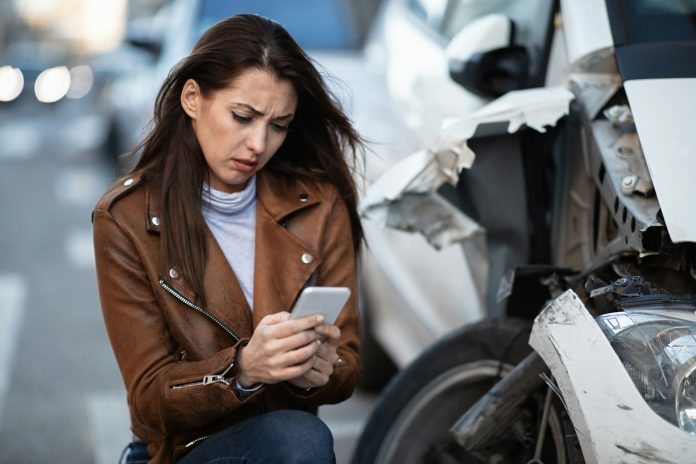Your car accident might have been a life-changing event, an event that left you with broken bones and emotional trauma, or costly medical bills. And so, when it comes to pursuing a personal injury claim following a collision, you always want to have the strongest evidence possible. Evidence that makes your case stronger, evidence that can win you fair compensation, and evidence that can make the process easier for you.
It’s the photos from the accident scene, witness statements, police reports and medical files, but after a car accident, it can also be your smartphone in the minutes after the crash. Use your phone to photograph vehicle damage, road conditions and visible injuries.
Tell your doctor or nurse about every part of your body that hurts, even if you think it’s a minor injury. You can always discover later that it is not minor. Medical records are important evidence of your injuries and how the accident has affected your life. Resolving your case will depend on your ability to prove your injuries and how they have affected you. Insurance companies and courts are evidence-based. Always err on the side of gather great evidence. The second step in this process is to start the evidence-gathering process right away.
Understanding Car Accident Claims
When a car accident leads to injuries or property damage, establishing fault and getting compensation for injuries can be a real struggle.
Determining fault can be a complex issue, but it’s essential to prove it in order to receive compensation.
In this sense, having solid evidence (as well as expert legal help) can be a game-changer, as it enables victims to build a strong case and safeguard their rights.
Determining Liability and Negligence
The most crucial part of any car accident claim is establishing liability. To recover damages from the other driver, you’ll need to prove that they were negligent and that their negligence caused your injuries. This often comes down to proving that the other driver failed to use reasonable care in driving the vehicle.
Common forms of negligence include:
- Speeding
- Distracted driving
- Failing to obey traffic signs
- Driving under the influence
Insurance companies look for evidence that might place blame on you. They may even try to claim you had some fault for the accident. That’s why it’s critical that you get as much proof as possible that your version of what happened is right.
In some areas, liability is determined based on police reports that provide an official record of the accident and, sometimes, the officer’s opinion about who caused the incident.
Types of Evidence in Car Accident Cases
Evidence is what you have to make your claim strong. Evidence establishes liability, and what injuries and losses you can recover from.
Key types of evidence include:
- Photographs of the accident scene, vehicle damage, and injuries
- Witness statements from bystanders or passengers
- Medical records detailing your injuries and treatment
- CCTV footage if available
- Your written account of the incident
Expert witnesses who can lend their professional opinion to your case can be very helpful. Perhaps an accident reconstructionist can analyse the crash to tell you just how it happened.
Preserve all documentation related to the accident, including:
- Police reports
- Medical bills and records
- Repair estimates
- Pay slips showing lost wages
This evidence helps quantify your damages and supports your claim for compensation.
Maximising Your Claim’s Potential
Collecting the evidence of fault and presenting it are necessary factors so the same remediation is certain to strengthen your claim. A home is a place where your physical being belongs in, so tell your story.
Gathering and Presenting Evidence Effectively
Begin gathering evidence as soon as possible after your crash. Take pictures of the crash scene, the damage to your vehicle, and your injuries. Collect the contact information from anyone who may have witnessed the crash, and ask them to make a statement. Ask for a copy of the police report, which sometimes contains details of an incident.
Make sure you go to the hospital immediately and keep all copies of documents relating to your treatment. They will evidence the injuries directly related to the accident. CCTV footage from the traffic light near your accident can also be used to support your claim. In complicated cases, the experts in accident reconstruction can help conduct a thorough analysis of the accident.
Put your evidence in chronological order, and craft the story of what happened. Your case will be much stronger – with insurance companies, or in court.
Negotiating a Fair Settlement
If you are dealing with the insurance company concerning an injury, have all of your evidence ready from the start. Put together a timeline of your injuries, medical bills, and what you will need in the future in terms of medical care. Have your records in terms of lost wages, and any other monetary damages provide a description of the pain and suffering you have endured.
Do not agree to the initial offer. Insurance adjusters always begin low, hoping you will accept their initial offer when the claim is new. Counter with a supported figure, based on your evidence. Point out the strength of your claim, based on the evidence you’ve collected – the doctors’ findings, the police report, what an accident reconstruction expert might have said, any type of expert testimony.
If the negotiations become difficult, you can get help from a car accident lawyer. A car accident lawyer can negotiate on your behalf and will prevent you from accepting a settlement that is not in your favour. Remember that your aim here is to get a settlement that covers all the expenses and losses that were caused by the accident.

